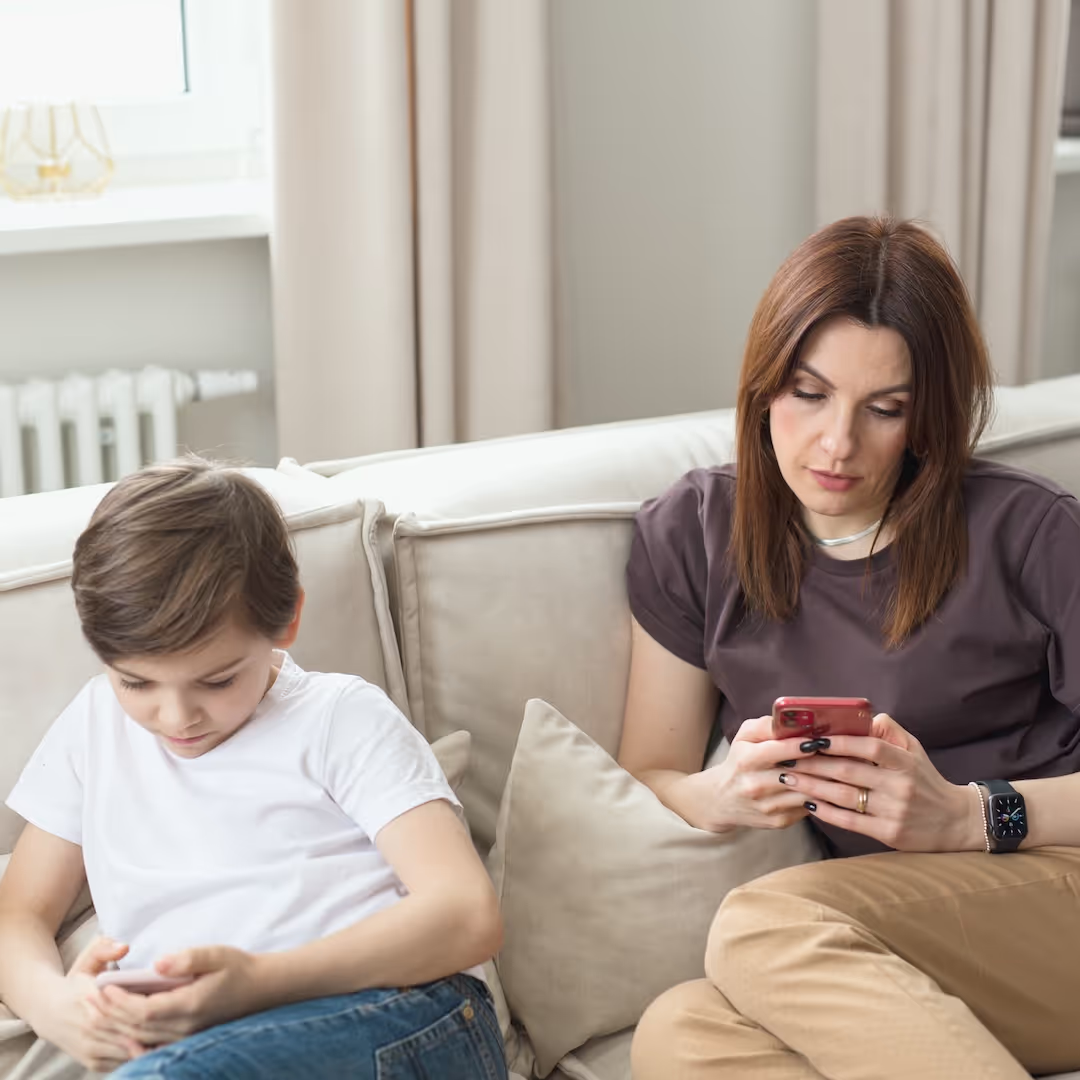


I thank my daughter, Tessa, for this guest blog. She wrote it as the introduction to a paper for a college course this past Spring. The paper had to deal with screen time issues.
Tessa discusses TikTok and, most importantly, links to 7 TikTok posts that came into her feed.
When watched with your child, these clips provide a unique, and I would add an awesome, way to have a conversation about TikTok and related media without having to look directly at your child’s feed (if they have TikTok).
As opposed to looking at your teen’s feed with them, which can often cause them to feel defensive or irritated, this greatly decreases that from happening.
Keep in mind that Instagram Reels, YouTube shorts, and Snapchat media all now provide short videos that are essentially the same as TikTok videos. (Are we the least bit surprised?)
After reading Tessa’s blog and the clips she shares, be sure to look at the “Questions to get the conversation started” at the end. I have created questions that accompany each of the TikTok videos.
*Of note, some of the TikToks mentioned have sensitive issues, so you may want to preview these quick 7 TikToks and decide which to share with your child.
As the seasons rapidly change, how I will spend my summer manifests in my mind.
I’m lying on a faded beach towel, the UV is a level eight, and my left hand holds a drink regulating my temperature through clanking ice cubes. My gaze stays glued to my right hand. I swipe up on TikTok. An 8-second video of Emma Chamberlain and Kendall Jenner mixing an Espresso Martini plays out. I swipe up again with no reaction. I don’t think I blink my eyes.
Learn more about showing our movies in your school or community!
Join Screenagers filmmaker Delaney Ruston MD for our latest Podcast

Learn more about our Screen-Free Sleep campaign at the website!
Our movie made for parents and educators of younger kids
Learn more about showing our movies in your school or community!
A young woman with the “angel number” 111 floating on the screen recites my future month’s expected emotional experience. Swipe. One couple salsa dances to reggaeton. Swipe. A 6-second Matt Rife stand-up sketch on autism. Swipe. Alix Earle’s “get-ready-with-me”. Swipe. An 8-second flash of a young boy shot in Gaza. Swipe. Pookie and Jett’s “outfit of the day”.
TikTok makes it difficult for us to discriminate between what is important and what is less important. TikTok, Instagram Reels, YouTube Shorts, and other short-form content feeds make it challenging for users to discern between types of information: trendy, fake, click-bait, cultural, politically incorrect, trivial, distressing, and capitalistic.
The rapid-fire succession of juxtaposing content numbs the human brain through a sort of sensory overload. The lines between entertainment, education, and serious issues become blurred. This can lead to desensitization or a lack of critical thinking about the content being consumed. I am curious about how that mental shift can carry over to other vital times when thorough, critical thinking is required.
I eventually began to wonder to myself how short-form media content became so well curated and catchy that three hours have passed, and my barely sunscreened body has become lobster red.
Reading non-fiction to understand the inner workings and motivations behind big-tech companies empowered me to critically rethink my actions towards my average of 150 habitual phone pick-ups per day. Four books published as recently as March 2024 are great choices to pick up instead of swiping up on TikTok this summer.
Learn more about showing our movies in your school or community!
Join Screenagers filmmaker Delaney Ruston MD for our latest Podcast

Learn more about our Screen-Free Sleep campaign at the website!
Our movie made for parents and educators of younger kids
Join Screenagers filmmaker Delaney Ruston MD for our latest Podcast
Be sure to subscribe to our YouTube Channel! With new ones added regularly, you'll find over 100 videos covering parenting advice, guidance, podcasts, movie clips and more. Here's our latest!
As we’re about to celebrate 10 years of Screenagers, we want to hear what’s been most helpful and what you’d like to see next.
Please click here to share your thoughts with us in our community survey. It only takes 5–10 minutes, and everyone who completes it will be entered to win one of five $50 Amazon vouchers.
I thank my daughter, Tessa, for this guest blog. She wrote it as the introduction to a paper for a college course this past Spring. The paper had to deal with screen time issues.
Tessa discusses TikTok and, most importantly, links to 7 TikTok posts that came into her feed.
When watched with your child, these clips provide a unique, and I would add an awesome, way to have a conversation about TikTok and related media without having to look directly at your child’s feed (if they have TikTok).
As opposed to looking at your teen’s feed with them, which can often cause them to feel defensive or irritated, this greatly decreases that from happening.
Keep in mind that Instagram Reels, YouTube shorts, and Snapchat media all now provide short videos that are essentially the same as TikTok videos. (Are we the least bit surprised?)
After reading Tessa’s blog and the clips she shares, be sure to look at the “Questions to get the conversation started” at the end. I have created questions that accompany each of the TikTok videos.
*Of note, some of the TikToks mentioned have sensitive issues, so you may want to preview these quick 7 TikToks and decide which to share with your child.
As the seasons rapidly change, how I will spend my summer manifests in my mind.
I’m lying on a faded beach towel, the UV is a level eight, and my left hand holds a drink regulating my temperature through clanking ice cubes. My gaze stays glued to my right hand. I swipe up on TikTok. An 8-second video of Emma Chamberlain and Kendall Jenner mixing an Espresso Martini plays out. I swipe up again with no reaction. I don’t think I blink my eyes.
A young woman with the “angel number” 111 floating on the screen recites my future month’s expected emotional experience. Swipe. One couple salsa dances to reggaeton. Swipe. A 6-second Matt Rife stand-up sketch on autism. Swipe. Alix Earle’s “get-ready-with-me”. Swipe. An 8-second flash of a young boy shot in Gaza. Swipe. Pookie and Jett’s “outfit of the day”.
TikTok makes it difficult for us to discriminate between what is important and what is less important. TikTok, Instagram Reels, YouTube Shorts, and other short-form content feeds make it challenging for users to discern between types of information: trendy, fake, click-bait, cultural, politically incorrect, trivial, distressing, and capitalistic.
The rapid-fire succession of juxtaposing content numbs the human brain through a sort of sensory overload. The lines between entertainment, education, and serious issues become blurred. This can lead to desensitization or a lack of critical thinking about the content being consumed. I am curious about how that mental shift can carry over to other vital times when thorough, critical thinking is required.
I eventually began to wonder to myself how short-form media content became so well curated and catchy that three hours have passed, and my barely sunscreened body has become lobster red.
Reading non-fiction to understand the inner workings and motivations behind big-tech companies empowered me to critically rethink my actions towards my average of 150 habitual phone pick-ups per day. Four books published as recently as March 2024 are great choices to pick up instead of swiping up on TikTok this summer.
Be sure to subscribe to our YouTube Channel! With new ones added regularly, you'll find over 100 videos covering parenting advice, guidance, podcasts, movie clips and more. Here's our latest!
Sign up here to receive the weekly Tech Talk Tuesdays newsletter from Screenagers filmmaker Delaney Ruston MD.
We respect your privacy.
I thank my daughter, Tessa, for this guest blog. She wrote it as the introduction to a paper for a college course this past Spring. The paper had to deal with screen time issues.
Tessa discusses TikTok and, most importantly, links to 7 TikTok posts that came into her feed.
When watched with your child, these clips provide a unique, and I would add an awesome, way to have a conversation about TikTok and related media without having to look directly at your child’s feed (if they have TikTok).
As opposed to looking at your teen’s feed with them, which can often cause them to feel defensive or irritated, this greatly decreases that from happening.
Keep in mind that Instagram Reels, YouTube shorts, and Snapchat media all now provide short videos that are essentially the same as TikTok videos. (Are we the least bit surprised?)
After reading Tessa’s blog and the clips she shares, be sure to look at the “Questions to get the conversation started” at the end. I have created questions that accompany each of the TikTok videos.
*Of note, some of the TikToks mentioned have sensitive issues, so you may want to preview these quick 7 TikToks and decide which to share with your child.
As the seasons rapidly change, how I will spend my summer manifests in my mind.
I’m lying on a faded beach towel, the UV is a level eight, and my left hand holds a drink regulating my temperature through clanking ice cubes. My gaze stays glued to my right hand. I swipe up on TikTok. An 8-second video of Emma Chamberlain and Kendall Jenner mixing an Espresso Martini plays out. I swipe up again with no reaction. I don’t think I blink my eyes.

It feels like we’re finally hitting a tipping point. The harms from social media in young people’s lives have been building for far too long, and bold solutions can’t wait any longer. That’s why what just happened in Australia is extremely exciting. Their new nationwide move marks one of the biggest attempts yet to protect kids online. And as we released a new podcast episode yesterday featuring a mother who lost her 14-year-old son after a tragic connection made through social media, I couldn’t help but think: this is exactly the kind of real-world action families have been desperate for. In today’s blog, I share five key things to understand about what Australia is doing because it’s big, it’s controversial, and it might just spark global change.
READ MORE >
I hear from so many parents who feel conflicted about their own phone habits when it comes to modeling healthy use for their kids. They’ll say, “I tell my kids to get off their screens, but then I’m on mine all the time.” Today I introduce two moms who are taking on my One Small Change Challenge and share how you can try it too.
READ MORE >
This week’s blog explores how influencers and social media promoting so-called “Healthy” ideals — from food rules to fitness fads — can quietly lead young people toward disordered eating. Featuring insights from Dr. Jennifer Gaudiani, a leading expert on eating disorders, we unpack how to spot harmful messages and start honest conversations with kids about wellness, body image, and what “healthy” really means.
READ MORE >for more like this, DR. DELANEY RUSTON'S NEW BOOK, PARENTING IN THE SCREEN AGE, IS THE DEFINITIVE GUIDE FOR TODAY’S PARENTS. WITH INSIGHTS ON SCREEN TIME FROM RESEARCHERS, INPUT FROM KIDS & TEENS, THIS BOOK IS PACKED WITH SOLUTIONS FOR HOW TO START AND SUSTAIN PRODUCTIVE FAMILY TALKS ABOUT TECHNOLOGY AND IT’S IMPACT ON OUR MENTAL WELLBEING.
